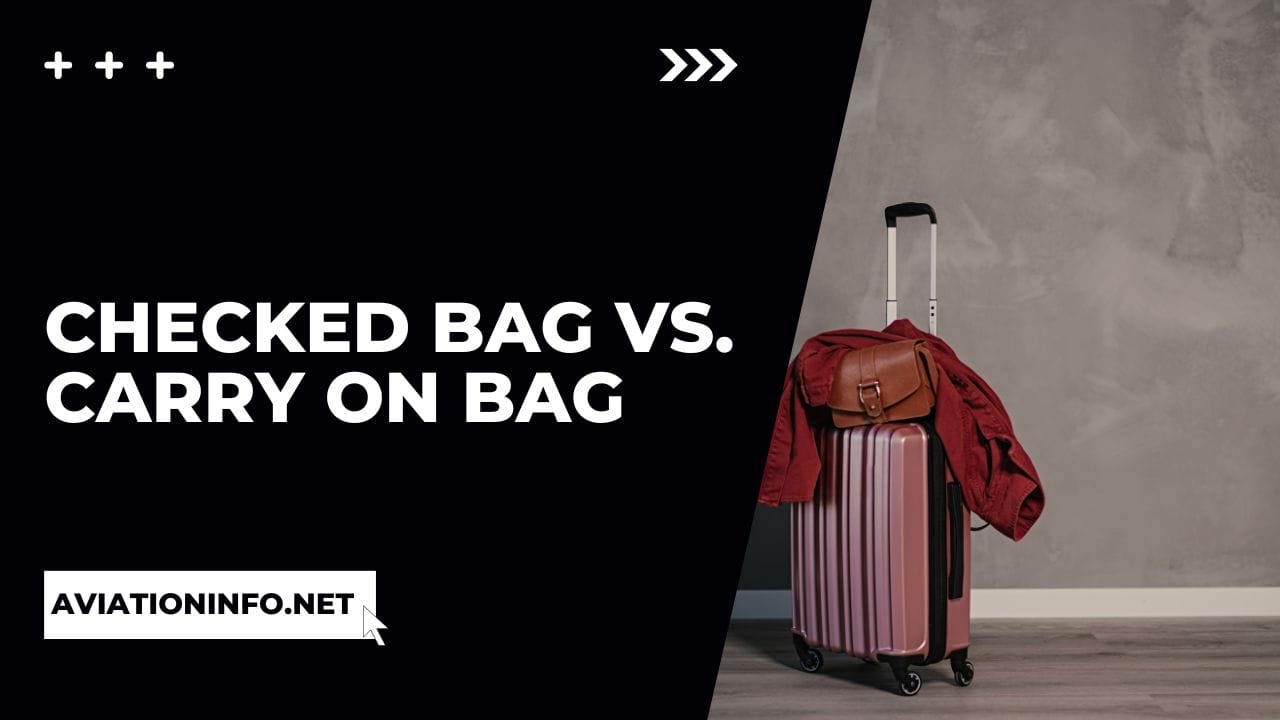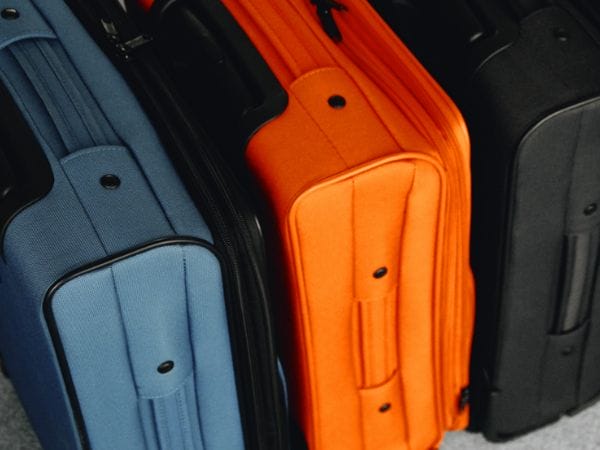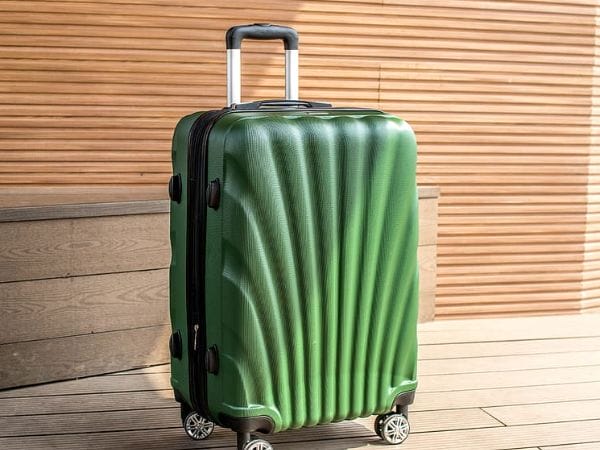We have to make a lot of important choices that affect the whole air travel. These include picking
the company and flight times, as well as where to sit on the plane. The choice between a checked
bag and a carry-on bag is one that tourists often think about for a while. Making the right choice
between these two types of bags can have a big effect on your trip. How you usually travel, the
length and reason of your trip, and the airline’s baggage rules all play a big part. In this article, we will
go over the pros and cons of checked bags vs. carry-ons and give you a full guide to help you plan
your next trip.
Checked Bag Vs. Carry On Bag: What are the differences
When traveling by plane, bags are usually put into two main groups: checked bags and carry-
on bags. Both of these choices have their own rules, benefits, and requirements that you need to know about
when planning your trip.
A checked bag is the stuff you leave at the airport before getting on the plane. Different airlines have
different rules about how big and heavy checked bags can be, but most allow up to 62 linear inches
(27 inches length + 21 inches width + 14 inches height) and 50 pounds. Most of the time, you have to
pay to check these things, but some flights and price groups let you do it for free.
On the other hand, a carry-on bag is the bag you bring on the plane with you. This bag has to fit
either under the seat in front of you or in the overhead bin. Most airlines limit the size of carry-on
luggage to around 45 linear inches (22 inches length + 14 inches width + 9 inches height) and the
weight to around 15-20 pounds. Most of the time, carry-on bags are included in the price of the
ticket, while checked bags are not.
Pros and Cons of a Checked Bag
Pros
- A checked bag has more space.
- Helpful for long trips or trips where you need to bring heavy things like winter clothing or
sports gear. No need to think as much about putting everything into a small area. - Makes traveling easier.
- Allows the traveler to move around the airport once checked without carrying them.
- Offers easy movement through busy terminals, elevators, or airport transit systems.
- Doesn’t require a fight for room in the overhead bins when getting on the plane, which is
becoming a more regular problem on many trips.
Cons
- There are often extra fees for checked bags, which can add a lot to your travel budget.
- Involves a chance that your stuff will get lost, be late, or get harmed.
- May cause a lot of trouble and stress, especially if you end up at your destination without
important items. - Requires longer waiting times at the airport.
Pros and Cons of a Carry on Bag

Pros
- Saves you money because many companies charge for checked bags but don’t charge for
carry-ons. - Lets you get to your things right away during the trip. Whether it’s your favorite book, some
snacks, or important papers, having these things close by can make your trip more
comfortable. - Helps you save time.
Cons
- The limited space.
- Requires more attention to TSA rules, especially when it comes to drinks and some other
things. - Can be hard to find space in the overhead bins on full flights, which can cause stress during
the boarding process.
Key Factors to Consider While Choosing Between Checked and Carry-On Bag
Several important things should help you decide between a checked bag and a carry-on bag. They
are-
Length and Purpose of Your Trip
How long you will be there and why you are going can have a big impact on your decision. A carry-on
might be enough for short trips, but a checked bag might be better for longer stays or certain events,
like a wedding or a ski trip.
Airline Baggage Policies
Each carrier has its own policy about the size, weight, and fees for checked bags. Think about these
tips and how your choice of bags could affect your trip budget.
Comfort and Convenience
Think about what makes you feel good and what will make your trip more fun. If you’d rather not be
tied down by big bags, it might be better to check your bag. Nevertheless, if you want to move
quickly and don’t want to wait at the machine, a carry-on bag might be better.
Specific Needs
Your pick may depend on things like hospital tools, special clothes, or big items. If you need these
things, you may need to check a bag because of the size or TSA rules.
Packing Habits
Do you tend to bring too much, or do you pack light? How you usually pack can be a big factor in this
choice.
Practical Tips for Packing Each Type of Bag
For a Checked Bag
- Use the extra space when packing a checked bag to pack bigger things and clothes that can
handle being handled roughly. - Use packing boxes or other sections to keep things organized and from moving around.
- Make sure to secure the loose things.
- Always only pack your most important things and valuables in your carry-on, since checked
bags can sometimes get lost.
For a Carry-On Bag
- Think about rolling clothes to save space and pack clothes that can be worn in different
ways. - Follow the 3-1-1 rule for liquids, gels, and sprays set by the TSA.
- Keep important things like trip papers, medications, and electronics close by so that security
checks can be done quickly. - Check the airline’s carry-on rules twice to make sure your bag meets their requirements.
When to Use a Checked Bag Vs a Carry-On Bag
If you’re going to the beach for two weeks, you might want to check a bag. Because you have more
space, you can bring more clothes, tools, books, and maybe even diving gear. You won't have to
worry about getting everything into a small carry-on bag because you will know you have everything
you need for different weather and activities.
For a short work trip, a carry-on bag should be enough. It saves time because you don’t have to wait
for your bags and can go straight from the plane to your meeting. You can bring a couple of work
outfits, some casual clothes, toiletries (up to the TSA limit of 3-1-1), and the tools you need.
Don’t forget that these are standard situations. Depending on the details of your trip, your own
tastes, and the rules of your flight, your needs may be different. Plan and pack carefully to get the
most out of your travels.
FAQs
Are there different rules for what can be packed in a checked bag compared to a carry-on bag?
Yes, the Transportation Security Administration (TSA) has rules about what each bag can carry. For
example, liquids, gels, and sprays in carry-on bags must be in packages no bigger than 3.4 ounces
(100ml) and fit in a quart-size, clear plastic bag with a zip-top.
Which is cheaper between traveling with a carry-on bag or a checked bag?
It depends on how the flight handles bags. Most flights include a carry-on bag at the price of the
ticket, but checked bags usually cost extra. But some companies charge extra for both, while others
include a checked bag in the price of the ticket. Always check your airline’s individual baggage policy
to find out the truth.
How can I avoid losing my checked bag?
You can’t fully get rid of the risk, but you can reduce it by getting to the airport early to check your
bag, putting your contact information on the bag, and avoiding tight layovers where your bag might
not make the connection.
What happens if my carry-on bag is deemed too large at the gate?
If your carry-on bag is too big for the airline’s size rules, it may have to be checked at the gate. This
means that it will be put in the cargo hold like a checked bag, and you will get it at the baggage claim
when you get off the plane. There might also be a fee for this service.
Closing Thoughts
Choosing between a checked bag and a carry-on bag isn’t just a matter of picking one or the other.
It’s a smart decision that will affect your trip in many ways. A checked bag might be a good idea if
you’re going on a long trip or need to bring big things. On the other hand, a carry-on bag is often
great for a short work trip or for people who value speed and ease over an extra packing room.
But the final choice is up to you. Your trip needs, your personal tastes, and the airline’s rules about
bags are all important things to think about. We hope that this article has helped you see the
different things that can affect your decision and will help you make the best choice for your next
trip. As always, the best way to have an easy and fun trip is to plan well.

After visiting more than 60 countries, I have probably been on every type of plane there is and visited countless airports. I did my very first international solo trip to South Africa at the age of only 16 and haven’t really stopped traveling since.
Despite the adventurous travel itch, I do have a nerdy side as well – which is satisfied by writing about all things aviation “too boring” for my regular travel blog.


